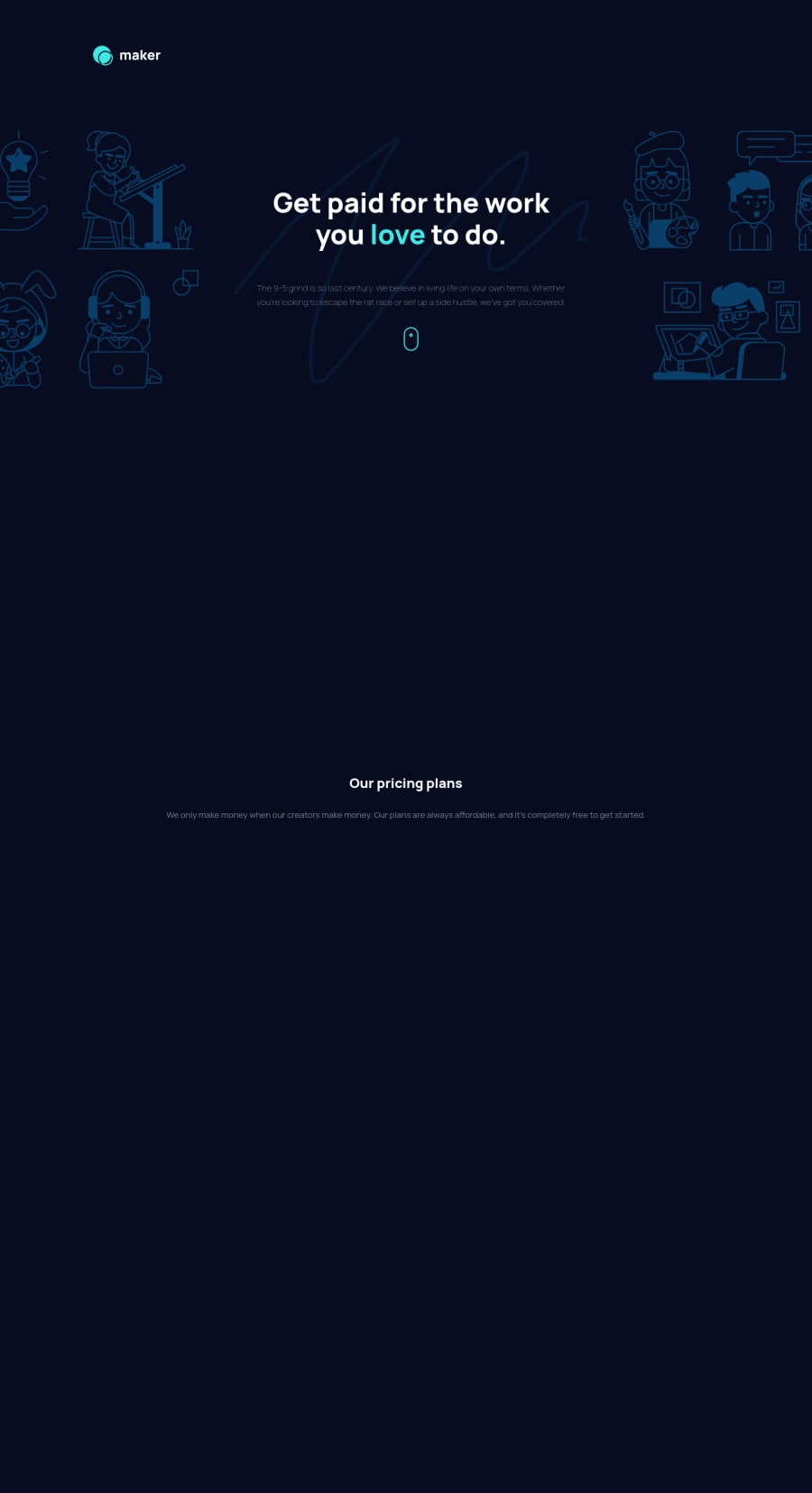
Submitted almost 4 years ago
maker-prelaunch-landing-page with vanilla JS animated with AOS
@josuke0227
Design comparison
SolutionDesign
Solution retrospective
Fist implementation of stying with BEM. I appreciate your advice about the usage of BEM. Any other advice is also appreciated!
Community feedback
Please log in to post a comment
Log in with GitHubJoin our Discord community
Join thousands of Frontend Mentor community members taking the challenges, sharing resources, helping each other, and chatting about all things front-end!
Join our Discord
